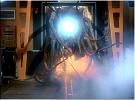madmickey
Posts: 1336
Joined: 2/11/2004
From: Calgary, Alberta
Status: offline

|
In regards to "supposed" diplomatic effort by the Japan to end the war later Ulta-Magic intercept
""The diplomatic intercepts included, for example, those of neutral diplomats or attachés stationed in Japan. Critics highlighted a few nuggets from this trove in the 1978 releases, but with the complete release, we learned that there were only 3 or 4 messages suggesting the possibility of a compromise peace, while no fewer than 13 affirmed that Japan fully intended to fight to the bitter end. Another page in the critics' canon emphasized a squad of Japanese diplomats in Europe, from Sweden to the Vatican, who attempted to become peace entrepreneurs in their contacts with American officials. As the editors of the "Magic" Diplomatic Summary correctly made clear to American policymakers during the war, however, not a single one of these men (save one we will address shortly) possessed actual authority to act for the Japanese government."
An inner cabinet in Tokyo authorized Japan's only officially sanctioned diplomatic initiative. The Japanese dubbed this inner cabinet the Big Six because it comprised just six men: Prime Minister Kantaro Suzuki, Foreign Minister Shigenori Togo, Army Minister Korechika Anami, Navy Minister Mitsumasa Yonai, and the chiefs of staff of the Imperial Army (General Yoshijiro Umezu) and Imperial Navy (Admiral Soemu Toyoda). In complete secrecy, the Big Six agreed on an approach to the Soviet Union in June 1945. This was not to ask the Soviets to deliver a "We surrender" note; rather, it aimed to enlist the Soviets as mediators to negotiate an end to the war satisfactory to the Big Six--in other words, a peace on terms satisfactory to the dominant militarists. Their minimal goal was not confined to guaranteed retention of the Imperial Institution; they also insisted on preservation of the old militaristic order in Japan, the one in which they ruled.
The conduit for this initiative was Japan's ambassador in Moscow, Naotake Sato. He communicated with Foreign Minister Togo--and, thanks to code breaking, with American policymakers. Ambassador Sato emerges in the intercepts as a devastating cross-examiner ruthlessly unmasking for history the feebleness of the whole enterprise. Sato immediately told Togo that the Soviets would never bestir themselves on behalf of Japan. The foreign minister could only insist that Sato follow his instructions. Sato demanded to know whether the government and the military supported the overture and what its legal basis was--after all, the official Japanese position, adopted in an Imperial Conference in June 1945 with the emperor's sanction, was a fight to the finish. The ambassador also demanded that Japan state concrete terms to end the war, otherwise the effort could not be taken seriously. Togo responded evasively that the "directing powers" and the government had authorized the effort--he did not and could not claim that the military in general supported it or that the fight-to-the-end policy had been replaced. Indeed, Togo added: "Please bear particularly in mind, however, that we are not seeking the Russians' mediation for anything like an unconditional surrender."
Starting with the publication of excerpts from the diaries of James Forrestal in 1951, the contents of a few of the diplomatic intercepts were revealed, and for decades the critics focused on these. But the release of the complete (unredacted) "Magic" Far East Summary, supplementing the Diplomatic Summary, in the 1990s revealed that the diplomatic messages amounted to a mere trickle by comparison with the torrent of military intercepts. The intercepts of Japanese Imperial Army and Navy messages disclosed without exception that Japan's armed forces were determined to fight a final Armageddon battle in the homeland against an Allied invasion. The Japanese called this strategy Ketsu Go (Operation Decisive). It was founded on the premise that American morale was brittle and could be shattered by heavy losses in the initial invasion. American politicians would then gladly negotiate an end to the war far more generous than unconditional surrender. Ultra was even more alarming in what it revealed about Japanese knowledge of American military plans. Intercepts demonstrated that the Japanese had correctly anticipated precisely where U.S. forces intended to land on Southern Kyushu in November 1945 (Operation Olympic). American planning for the Kyushu assault reflected adherence to the military rule of thumb that the attacker should outnumber the defender at least three to one to assure success at a reasonable cost. American estimates projected that on the date of the landings, the Japanese would have only three of their six field divisions on all of Kyushu in the southern target area where nine American divisions would push ashore. The estimates allowed that the Japanese would possess just 2,500 to 3,000 planes total throughout Japan to face Olympic. American aerial strength would be over four times greater."
From mid-July onwards, Ultra intercepts exposed a huge military buildup on Kyushu. Japanese ground forces exceeded prior estimates by a factor of four. Instead of 3 Japanese field divisions deployed in southern Kyushu to meet the 9 U.S. divisions, there were 10 Imperial Army divisions plus additional brigades. Japanese air forces exceeded prior estimates by a factor of two to four. Instead of 2,500 to 3,000 Japanese aircraft, estimates varied between about 6,000 and 10,000. One intelligence officer commented that the Japanese defenses threatened "to grow to [the] point where we attack on a ratio of one (1) to one (1) which is not the recipe for victory.""
http://www.weeklystandard.com/Utilities/printer_preview.asp?idArticle=5894&R=C62A29C91
It also talks about the fact that between 250,000- 400,000 Asian were dying a month due to the war.
This from the author of "Downfall: The End of the Imperial Japanese Empire."
< Message edited by madmickey -- 8/7/2005 5:47:04 PM >
|
 Printable Version
Printable Version





















 New Messages
New Messages No New Messages
No New Messages Hot Topic w/ New Messages
Hot Topic w/ New Messages Hot Topic w/o New Messages
Hot Topic w/o New Messages Locked w/ New Messages
Locked w/ New Messages Locked w/o New Messages
Locked w/o New Messages Post New Thread
Post New Thread